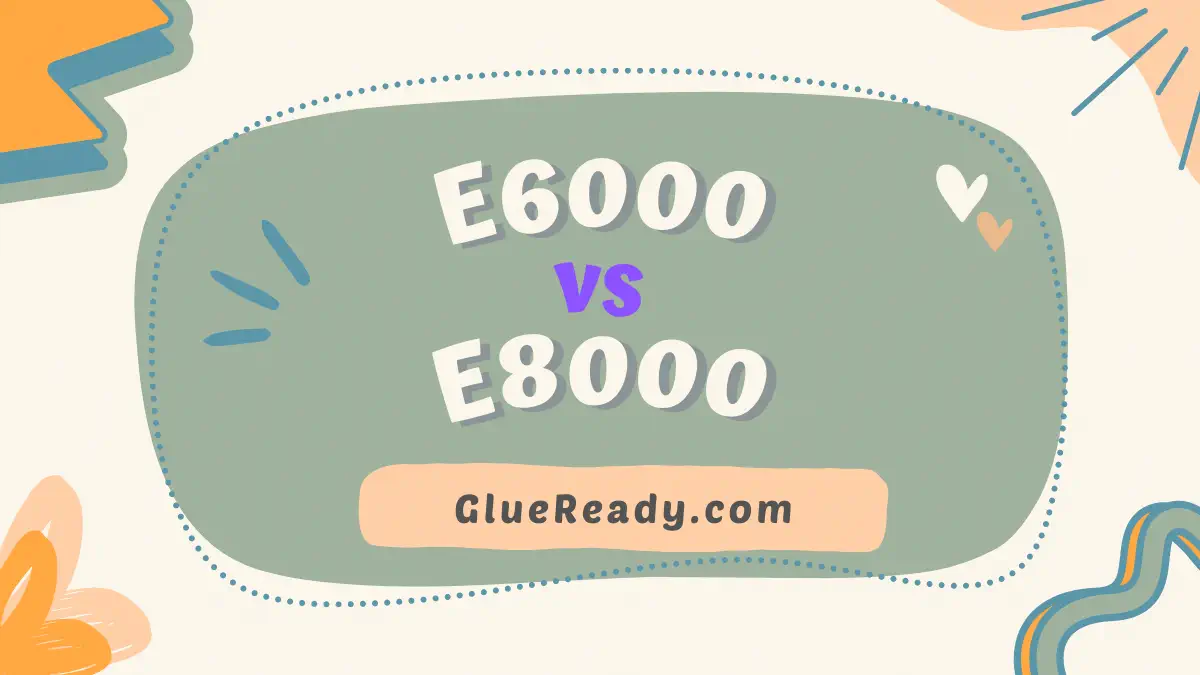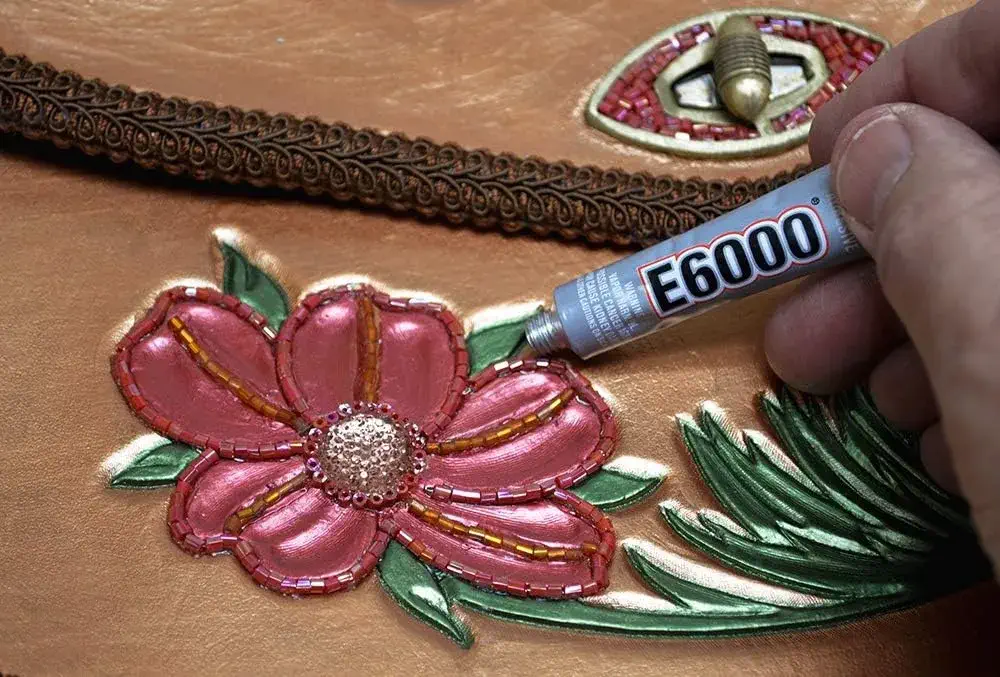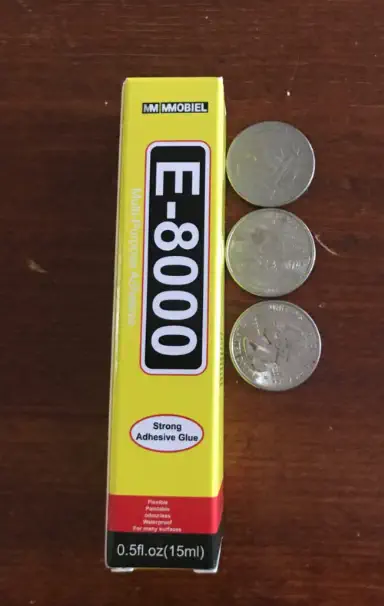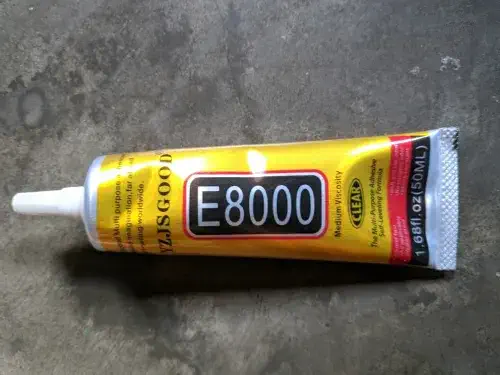E6000 vs E8000 Glue | Things You Should Know!

When it comes to choosing the right adhesive for your project, the decision can be daunting.
E6000 adhesive is more flexible and shock-resistant than the E8000. But the E8000 glue is faster-drying and more rigid than the E6000.
I will conduct a comparative analysis of E6000 vs E8000 glues, exploring their unique features, strengths, and ideal uses to help you make an informed decision.
Read More: E6000 vs Loctite
What is E6000 Glue?
Since the late ’80s, E6000 glue has been a popular choice for DIYers and professionals. It is a high-quality adhesive made of polyurethane.
It is renowned for its strength and flexibility, as it can create a durable bond that can withstand shocks, vibrations, and movements without cracking or breaking.
It is also resistant to water, moisture, UV rays, temperature changes, and common chemicals, making it suitable for indoor and outdoor applications.
E6000 glue dries clear and does not leave any residue or discoloration on the surfaces it bonds to. It is available in various sizes and formats, such as tubes, bottles, pens, and spray cans.

What is E8000 Glue?
E8000 glue is a relatively new product on the adhesive market, but it has quickly gained a loyal following among users who value speed and convenience.
It is also a one-part epoxy adhesive that can bond a wide variety of materials, like E6000 glue.
In comparison to E6000 glue, it dries significantly faster, taking approximately 24 to 48 hours to cure fully.
It also has a higher temperature resistance, up to 250°F (121°C), compared to 180°F (82°C) for E6000 glue. It has a mild odor during application and dries clear as well.

E6000 vs E8000 Glue Comparison Table
Below is a comparison table highlighting the key features and differences between E6000 and E8000 glues:
| E6000 Glue | E8000 Glue |
| 24 to 72 hours curing time | 24 to 48 hours curing time |
| Resistant to water and moisture | Highly waterproof |
| -40°F to 180°F (-40°C to 82°C) temperature resistance | -40°F to 250°F (-40°C to 121°C) temperature resistance |
| Strong odor during application | Mild odor during application |
| Some variants may have a precision applicator | Usually comes with a precision tip |
| Common Applications: Crafts, jewelry making, DIY projects | Common Applications: Electronics, glass bonding, repairs |
E6000 vs E8000 Glue: How to Pick One?
Ultimately, the choice between E6000 vs E8000 glue depends on your personal preference and the specific requirements of your project.
Both products are high-quality adhesives that can offer satisfactory results for different purposes. However, here are some general guidelines that might help you decide:
Choose E6000 glue if you need a strong and flexible bond that can withstand shocks and movements without cracking or breaking.
If you are working with transparent or delicate materials that require a clear and residue-free adhesive, go for E6000.
Also, if you are looking for a versatile product that can bond to a wide range of materials and work well for indoor and outdoor applications, you can use E6000 glue.

Go for E8000 glue if you want a fast and easy bond that can cure in a shorter time. If you are working with electronics or other materials that need high-temperature resistance or excellent flexibility, choose E8000 glue.
Also, if you want a product that has a mild odor during application and is highly waterproof, you can use E8000 glue.
How to Use E6000 or E8000 Glue?
Before using either product, make sure to read the instructions and warnings on the label carefully and follow them accordingly. Here are some general steps on how to use E6000 or E8000 glue:
- Prepare the surfaces you want to bond by cleaning them with a dry cloth or rubbing alcohol to remove any dust, dirt, grease, or oil. Make sure the surfaces are dry and free of moisture.
- An adhesive layer should be applied to one of the surfaces.. You can use a nozzle, a brush, a pen, or a spray can, depending on the format of the product you have. Do not apply too much adhesive, as it might create bubbles or reduce the bond strength.
- Press the surfaces together firmly and hold them in place for a few minutes. You can use clamps, tape, or weights to secure the bond if needed.
- Let the adhesive cure for the recommended time, depending on the product and the environmental conditions. Do not move or disturb the bond until it is fully cured.
- Enjoy your repaired or created item!
Frequently Asked Questions (FAQs) about E6000 and E8000 Glue
Is E6000 Glue the Same as B7000?
No, E6000 and B7000 are not the same. They are both adhesives, but they have some key differences.
Know More: E6000 vs B7000
Is E6000 Waterproof When Dry?
Yes, E6000 glue is waterproof when dry. When it is completely cured for 72 hours, the adhesive properties of E6000 glue are not affected by moisture, water, or any other liquid.
Is E8000 Glue Waterproof?
Yes, E8000 glue is highly waterproof. It can resist water and moisture, making it suitable for outdoor applications or for bonding materials that might get wet or damp.
How Long Does It Take for E8000 Glue to Dry?
Depending on the temperature and humidity, E8000 glue will fully cure in 24 to 48 hours.
Final Thoughts
I hope this article helped you understand how E6000 vs E8000 glue differs and how to choose the right one.
As you can see, E6000 and E8000 glue have their own strengths and weaknesses that make them more or less suitable for different purposes. The right glue depends on your specific needs and preferences, so there’s no definitive answer.






